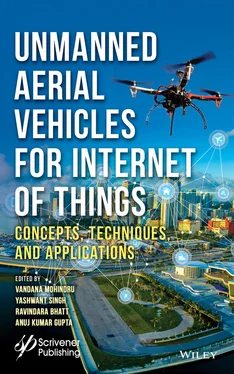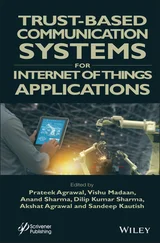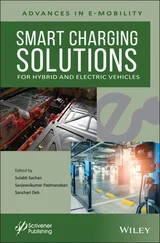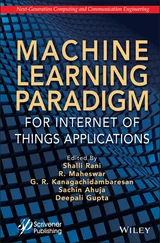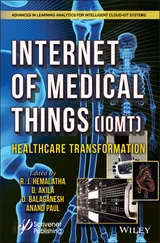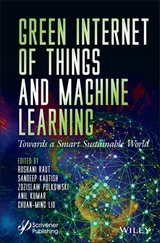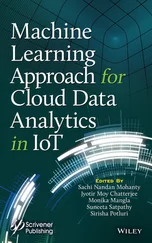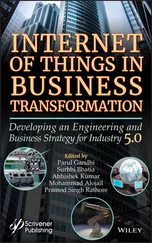2.2.5 Trajectory Optimization
The performance of UAV assisted wireless networks can be significantly improved in aspect of throughput as well as coverage by optimizing the trajectory of the UAVs. This optimization depends upon the factors like flight constraints, energy constraints, ground user’s demands, collision avoidance, channel variations, mobility of UAV, etc. Table 2.2 lists the work carried out till date for optimizing the performance of the UAV systems by designing the optimum UAV trajectory.
The article by Chen et al. [62] proposes autonomous UAV wherein positions of the UAVs are self-optimized based on real time radio measurement.
Table 2.2State-of-the-art solutions for optimizing the UAV trajectory.
| Parameter optimized |
Effect on performance of system |
Research article |
| User scheduling and trajectory of UAV |
Maximized the minimum average data rate experienced by ground users |
[55] |
| Trajectory of UAV with multiple antennas |
Maximized system rate in uplink communication |
[56] |
| Joint optimization of UAV trajectory and source/relay transmit power |
Maximized throughput of relay based UAV system |
[57] |
| Path planning algorithm |
Minimized total energy consumption of the UAV |
[53, 58] |
| UAV trajectory using mixed integer linear programming |
Fuel consumption minimization |
[59] |
| Path planning |
Likelihood of target detection |
[60] |
| Trajectory of UAV |
Connecting of ad-hoc networks was improved |
[61] |
Another major factor having a crucial impact on the performance of UAV assisted wireless communication networks is the limited available UAV on-board energy. This in turn limits the UAV flight and hovering duration. Over a period of time, research work has been carried out as in Refs. [63–74], where various methods have been proposed for minimizing the energy usage of UAVs in UAV communication. Few solutions proposed to encounter this challenge can be listed as, UAV optimal trajectory determining, efficient scheduling in multiple UAV scenario, dynamically activating only the required number of drones at a particular time, optimization of transmission times, reducing the required transmit power, efficient resource allocation schemes, energy harvesting for operations of small UAVs and many more. Managing the available resources of energy, bandwidth and time plays a crucial role in improving the performance of UAV communication systems [70, 75].
UAV aided wireless communication networks is yet another important step towards the development of future smart cities of 5G-IoT era. For the past 4 decades UAVs have been occupying the sky and playing a vital role in wireless communication systems. Researchers across the globe have identified various challenges of this technology and have proposed feasible solutions to these problems. Efforts have been made here to highlight few of the challenges to be overcome while designing the optimum UAV-assisted networks, thereby paving a path for the budding researchers to tread upon. Over the past few years many research challenges have been identified and worked upon and this technology is being updated at a tremendous speed. The progress is still ongoing.
1. Singhal, G., Bansod, B., Mathew, L., Unmanned Aerial Vehicle Classification, Applications and Challenges: A Review , 2018.
2. Shakhatreh, H. et al. , Unmanned Aerial Vehicles (UAVs): A Survey on Civil Applications and Key Research Challenges. IEEE Access , 7, 48572–48634, 2019.
3. Khawaja, W., Ozdemir, O., Guvenc, I., UAV air-to-ground channel characterization for mmWave systems. Proc. IEEE VTC Fall Workshops , Sep. 2017.
4. NTT DOCOMO Inc. and Ericsson, New SID on Study on enhanced LTE Support for Aerial Vehicles, 3GPP Study Item Description (RP-170742) , 3GPP, Dubrovnik, Croatia, Mar. 2017.
5. Li, B., Fei, Z., Zhang, Y., UAV Communications for 5G and Beyond: Recent Advances and Future Trends. IEEE Internet Things J. , 1, 1, 99, December 2018.
6. Matolak, D.W. and Sun, R., Unmanned Aircraft Systems: Air-Ground Channel Characterization for Future Applications. IEEE Veh. Technol. Mag. , 10, 2, 79–85, June 2015.
7. Sun, R. and Matolak, D.W., Initial Results for Airframe Shadowing in L- and C-Band Air-Ground Channels. Proc. Integrated Commun., Navigation, and Surveillance Conf , Apr. 2015, pp. 1–8.
8. 3GPP, Enhanced LTE support for aerial vehicles , May 2017.
9. Khawaja, G. et al. , A Survey of Air-to-Ground Propagation Channel Modeling for Unmanned Aerial Vehicles. IEEE Commun. Surv. Tutorials , 21, 3, 2361–2391, December 2019.
10. Zajić, A., Mobile-to-mobile wireless channels , Artech House, Boston, London, 2012.
11. Zheng, Y., Wang, Y., Meng, F., Modeling and simulation of pathloss and fading for air-ground link of HAPs within a network simulator, in: Proc. of IEEE International Conference on Cyber-Enabled Distributed Computing and Knowledge Discovery (CyberC) , Beijing, China, Oct. 2013.
12. Chu, X., Calvo-Ramirez, C., Briso, C., Yin, X., Low Altitude UAV Air-to-Ground Channel Measurement and Modeling in Semi urban Environments. Wirel. Commun. Mob. Comput., 2017, Article ID 1587412, 11 pages, November 2017.
13. Mozaffari, M., Saad, W., Bennis, M., Debbah, M., Efficient deployment of multiple unmanned aerial vehicles for optimal wireless coverage. IEEE Commun. Lett. , 20, 8, 1647–1650, Aug. 2016.
14. Yaliniz, R., El-Keyi, A., Yanikomeroglu, H., Efficient 3-D placement of an aerial base station in next generation cellular networks, in: Proc. of IEEE International Conference on Communications (ICC) , Kuala Lumpur, Malaysia, May 2016.
15. Bor-Yaliniz, I. and Yanikomeroglu, H., The new frontier in ran heterogeneity: Multi-tier drone-cells. IEEE Commun. Mag. , 54, 11, 48–55, 2016.
16. Hayajneh, A.M., Zaidi, S.A.R., McLernon, D.C., Ghogho, M., Drone empowered small cellular disaster recovery networks for resilient smart cities, in: Proc. of IEEE International Conference on Sensing, Communication and Networking (SECON Workshops) , June 2016.
17. Gomez, K., Hourani, A., Goratti, L., Riggio, R., Kandeepan, S., Bucaille, I., Capacity evaluation of aerial LTE base-stations for public safety communications, in: Proc. IEEE European Conference on Networks and Communications (EuCNC) , June 2015.
18. Challita, U. and Saad, W., Network formation in the Sky: Unmanned aerial vehicles for multi-hop wireless backhauling, in: Proc. of IEEE Global Telecommunications Conference (GLOBECOM) , Singapore, Dec. 2017.
19. Chen, M., Mozaffari, M., Saad, W., Yin, C., Debbah, M., Hong, C.S., Caching in the sky: Proactive deployment of cache-enabled unmanned aerial vehicles for optimized quality-of-experience. IEEE J. Sel. Areas Commun. , 35, 5, 1046–1061, May 2017.
20. Kalantari, E., Yanikomeroglu, H., Yongacoglu, A., On the number and 3D placement of drone base stations in wireless cellular networks, in: Proc. of IEEE Vehicular Technology Conference , 2016.
21. Shakhatreh, H., Khreishah, A., Chakareski, H., Salameh, B., Khalil, I., On the continuous coverage problem for a swarm of UAVs, in: Proc. of IEEE 37th Sarnoff Symposium , Sep. 2016, pp. 130–135.
22. Azari, M.M., Rosas, F., Chen, K.C., Pollin, S., Joint sum-rate and power gain analysis of an aerial base station, in: Proc. of IEEE GLOBECOM Workshops , Dec. 2016.
Читать дальше
